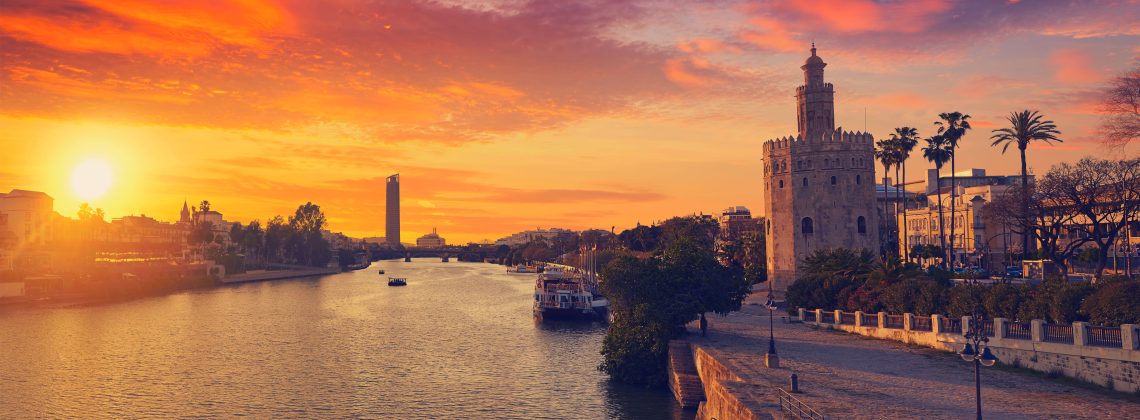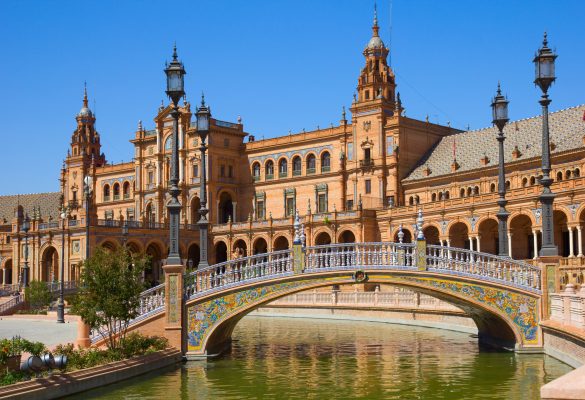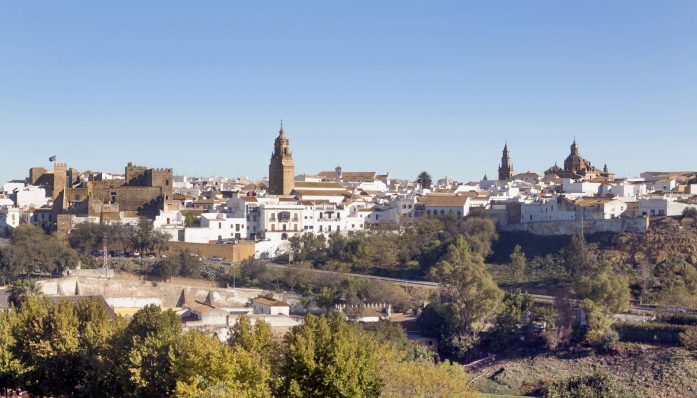
Sevilla Province, nestled in the southern part of Spain, stands as an embodiment of the region’s rich cultural heritage and historical significance. The province is a mosaic of picturesque landscapes, from the rolling hills dotted with olive trees to the fertile plains that support its agriculture. It’s the heartbeat of Andalusia, alive with flamenco rhythms and the fragrance of orange blossoms from its capital, Seville.
From the enchanting streets of its capital city to the serene countryside, Sevilla province is a destination that promises an unforgettable experience. Here’s a closer look at what makes Sevilla a must-visit for any traveler.

Seville City
At the heart of the province lies its capital city, Seville, a place where the past and the present seamlessly blend. The city is renowned for its architectural marvels such as the Seville Cathedral, the largest Gothic cathedral in the world, and the Real Alcázar, a royal palace that exemplifies Mudéjar architecture.
No visit to Seville is complete without witnessing a flamenco performance in the Triana district, where the soulful music and passionate dance offer a glimpse into Andalusian culture.
Seville’s charm extends to its lively festivals as well. The Semana Santa (Holy Week) and Feria de Abril (April Fair) are celebrated with great fervor, showcasing elaborate processions and vibrant festivities that captivate both locals and tourists alike.
Beyond the City: A Journey Through the Countryside
Venturing out of the city, the province of Sevilla reveals a landscape dotted with orange groves, olive trees, and sunflower fields that stretch as far as the eye can see. The region’s small towns and villages, each with its unique character, are perfect for those looking to explore Andalusia’s rural beauty.

One such town is Carmona, located just a short drive from Seville. This ancient town is perched on a ridge overlooking the Andalusian plains and boasts well-preserved Roman ruins, including a necropolis and theater. The town’s narrow streets are lined with whitewashed houses, leading to picturesque plazas and historic churches.
Sevilla province is a bastion of Andalusian heritage and culture. Towns like Utrera, Écija, and Osuna are rich in historical monuments, from Moorish castles to baroque churches, each with its own story to tell.
As travelers explore Sevilla Province, they encounter charming towns and ancient ruins that speak volumes of the area’s past. With a legacy that spans Roman, Moorish, and Christian influences, the architecture and local customs are a testament to a bygone era that still echoes through the cobblestone streets. The province is not just a relic of history; it actively preserves its traditions while embracing modernity, showing in its vibrant festivals and culinary delights that attract visitors from around the world.
Sevilla province Natural landmarks
For the nature lover and adventurer, Sevilla province offers a wealth of activities.
The province of Seville, in addition to the city of Seville itself, offers several natural landmarks and areas of outstanding beauty. Here are some notable ones:
- Sierra Norte Natural Park: Located in the northern part of the province, this natural park is characterized by its rugged mountains, lush forests, and traditional Andalusian villages. It offers opportunities for hiking, mountain biking, horseback riding, and wildlife observation.
- Doñana National Park: While part of the park extends into the neighboring provinces of Huelva and Cádiz, a portion of Doñana lies within the province of Seville. This UNESCO World Heritage Site is renowned for its diverse ecosystems, including marshlands, dunes, and forests, which provide habitat for numerous bird species, mammals, and reptiles.
- Sierra Sur de Sevilla Natural Park: Situated in the southeastern part of the province, this natural park encompasses a range of mountains and valleys. Its landscape is dotted with olive groves, cork oak forests, and picturesque villages. Visitors can enjoy outdoor activities such as hiking, rock climbing, and exploring the region’s cultural heritage.
- Garganta del Río Huéznar: This scenic gorge and river are located near the town of San Nicolás del Puerto in the Sierra Norte region. The area is popular for hiking and picnicking, with walking trails that lead visitors through stunning natural surroundings, including waterfalls and rock formations.
- Embalse de la Breña II: This reservoir, also known as the Breña II Dam, is located near the town of Almadén de la Plata. It offers opportunities for fishing, boating, and birdwatching amidst a tranquil landscape surrounded by hills and forests.
- The Guadalquivir River: We can’t forget the Guadalquivir River, which runs through the capital and the rest of the province. The river is ideal for kayaking or paddle boarding and offers picturesque views of the countryside.
These natural landmarks showcase the diverse beauty of the Seville province, from mountain ranges and wetlands to coastal areas and river gorges, providing visitors with a variety of outdoor experiences and opportunities to connect with nature.
Sevilla province is a microcosm of everything that makes Andalusia enchanting. Its capital city is a vibrant cultural hub, while its countryside offers serene beauty and a glimpse into traditional Spanish life. Whether you’re exploring its architectural wonders, tasting its culinary delights, or embarking on outdoor adventures, Sevilla promises an experience that is both rich and diverse. This jewel of Andalusia beckons travelers with its unique blend of history, culture, and natural beauty, making it an unforgettable destination on any Spanish itinerary.

Buenos dias,
this mail just to present you our restaurant:
Fargo is one of the only two organic slow food restaurants in Sevilla.
Open every day, offering a 100% homemade menu which changes every week according to the season and the market and that includes a majority of vegan and vegetarian dishes as well as organic andalucian fishes and meat.
Selecting organic, fresh, small scale local products as well as exclusive international spirits (Cognac François Voyer, Hine, Camus, Armagnac Laberdolive, Calvados Chateau du Breuil, Whisky Springbank, Compass Box, Brandy Ximenez Spinola…) and “dangerously addictive” desserts.
At least half the menu is gluten free.
No Coca-Cola, no mayonnaise, no Ketchup, no Cruz Campo (the “local” beer), no loud music.
We are closed on July and August.
Some pics of our dishes out of the menu on our Facebook page : https://www.facebook.com/fargobio?fref=ts
Muchas gracias, un saludo cordial.
Yann Coucharriere ( owner )